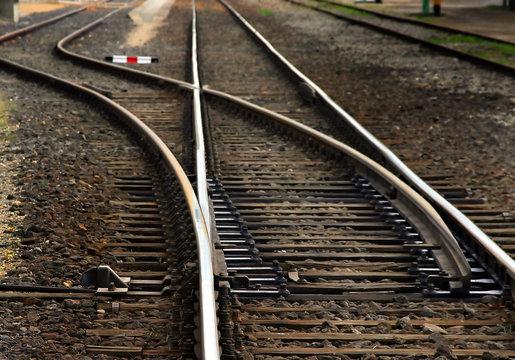
Article by
To travel across the vast network of train tracks is an intricate mix of physics and engineering, an art that allows trains to gracefully navigate even the most complex pathways. While it may seem like magic, the secret lies in the ingenious design of the wheels and tracks that work in harmony to ensure a seamless journey.
One might assume that a train's steering wheel controls its direction, but in reality, the steering wheel only manages the speed of the train. The magic unfolds through the principles embedded in the wheel's design – a perfect balance of thickness on the inside and thinness on the outside, ensuring that the train stays on track without derailing.
At the heart of this design is the wheel's inner ring, called the rim. The rim acts as a guide, dictating the direction the train will take. If the goal is to shift to the right side of the track, the curved rail on the left is moved out of the way, allowing the train to seamlessly transition to its desired route.
A common type of track employs center tongues that resemble squirming shapes. These tongue rails serve as guides, directing the wheels towards a specific side of the track. However, a simple switch in the position of the tongue rails can alter the course of the train, shifting it from a curved to a straight track.
This transition, however, comes with its set of challenges. The train's raised rim could potentially be obstructed by the tongue, risking a derailment at the speed of travel. To counter this, engineers devised a solution by cutting a slit in the center. While this alleviated the risk of rollovers, the ride remained less than comfortable.
The engineers didn't stop there. They extended the crossover section, introducing a new set of issues. As the wheels passed through the extended section, the risk of derailment and potential rollovers increased. Enter the wheel guard – the ultimate problem solver.
The wheel guard restricted the flange from deflecting outward, ensuring that the train could never derail. It was a masterstroke in engineering that secured a smooth and stable journey. Now, it's not the driver dictating the tracks the train takes, but the ground wrenchers who change the turnouts according to predetermined routes. However, with the relentless development of railroad technology, the role of the switchman has gradually faded into history.
The intricate process of changing tracks is a testament to the fusion of human ingenuity and technological innovation. From the careful design of wheels to the implementation of automated systems, every aspect of this journey reflects a commitment to excellence in the world of transportation. As trains continue to glide seamlessly through ever-changing tracks, the legacy of those who shaped this evolution lives on, reminding us that progress is an ongoing journey propelled by the pursuit of perfection.
 Monthly "Azeem English Magazine", launched in 2000, records the information about diverse fields like mental health, literature, research, science, and art. The magazine's objective is to impart social, cultural, and literary values to society.
Monthly "Azeem English Magazine", launched in 2000, records the information about diverse fields like mental health, literature, research, science, and art. The magazine's objective is to impart social, cultural, and literary values to society.
+92 51 88 93 092
First Floor, RAS Arcade, Eidhi Market, Street#124, G-13/4, Islamabad, Pakistan, 44000.